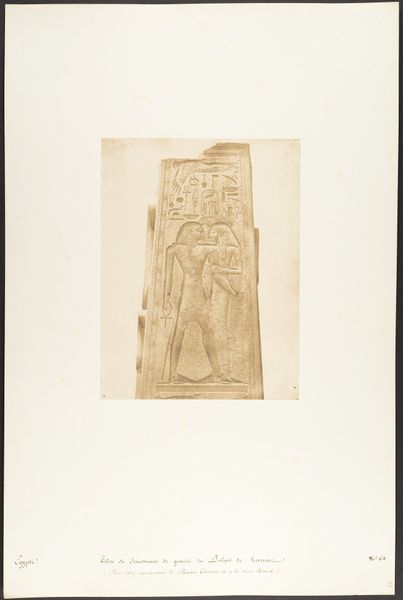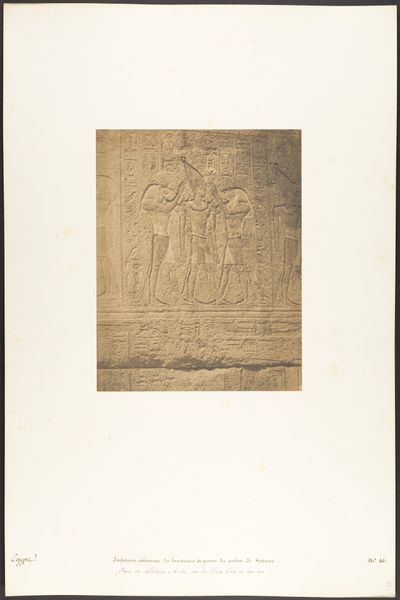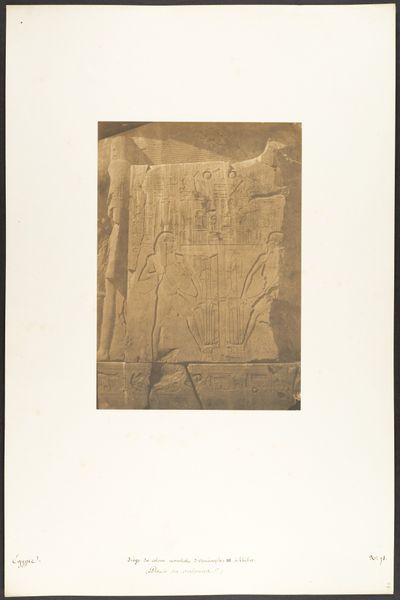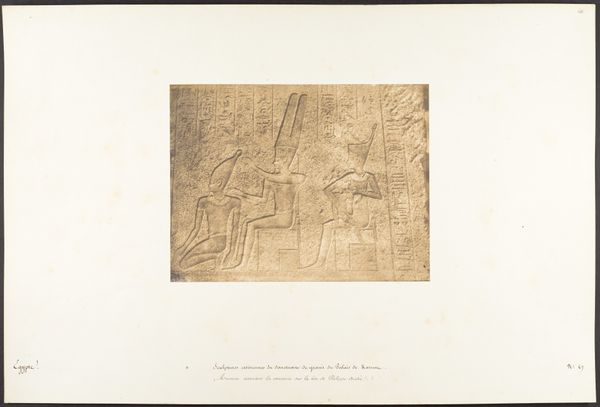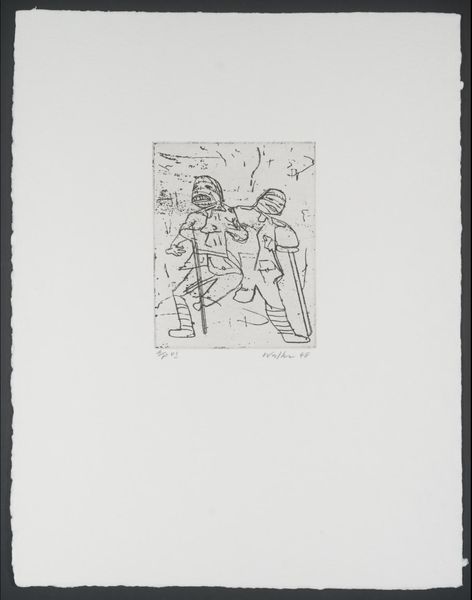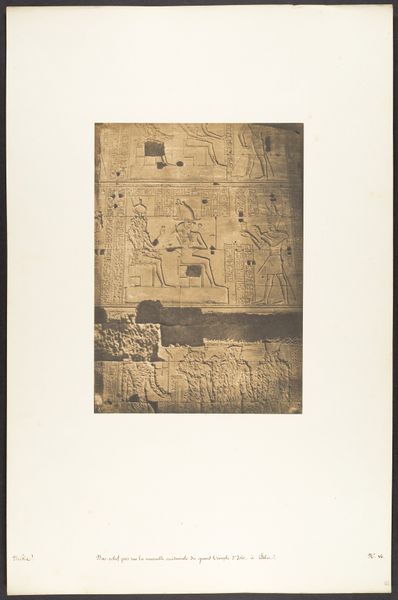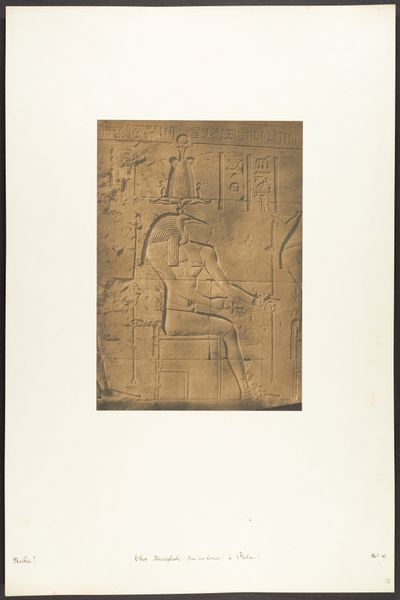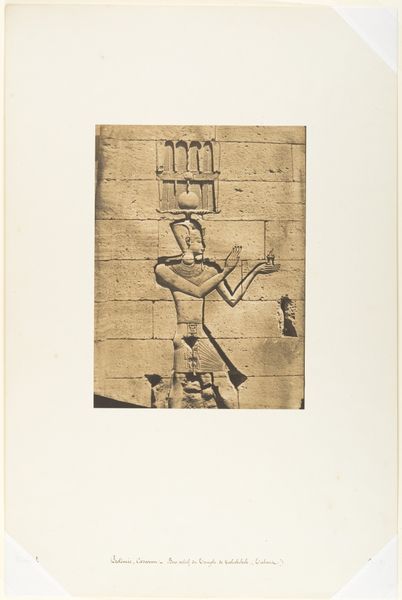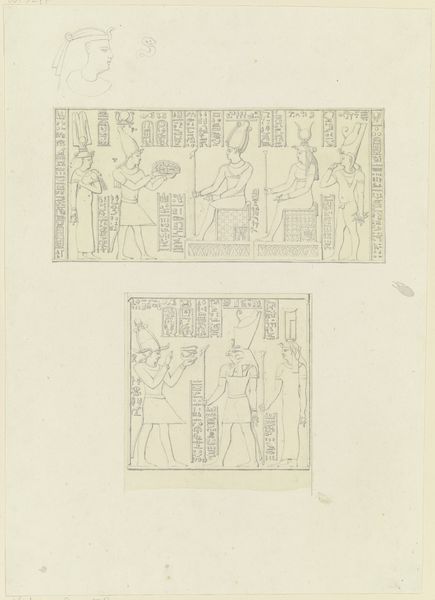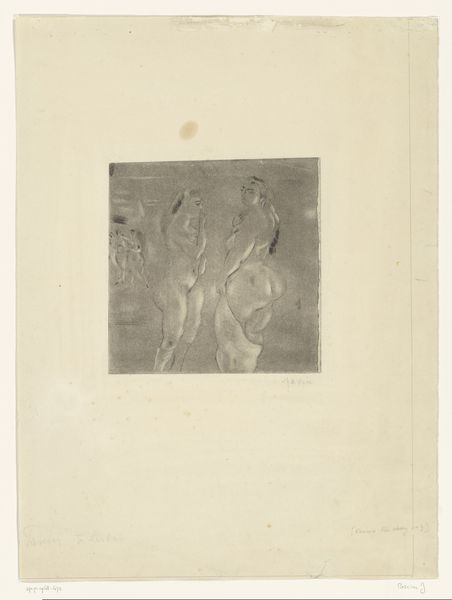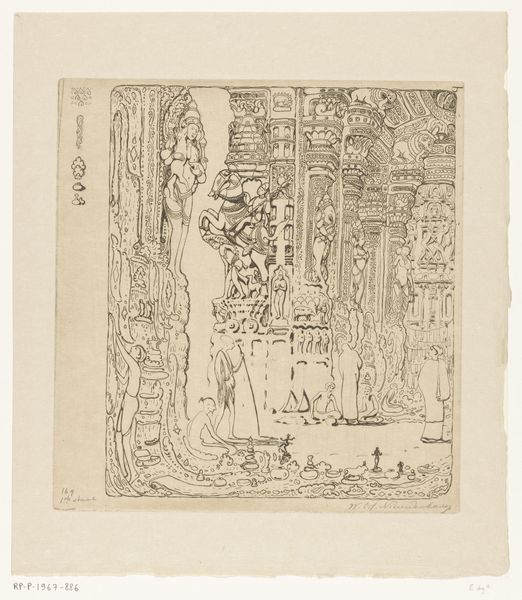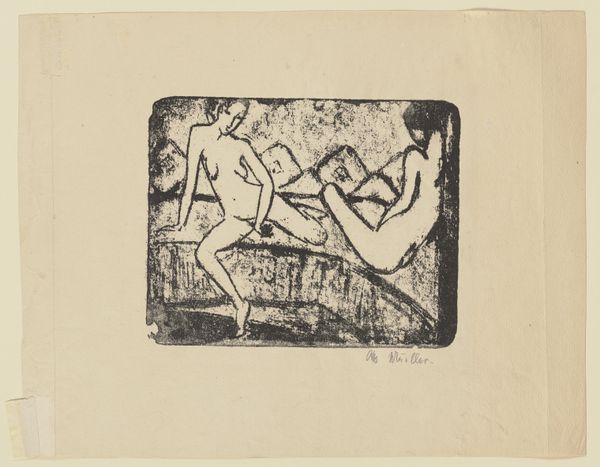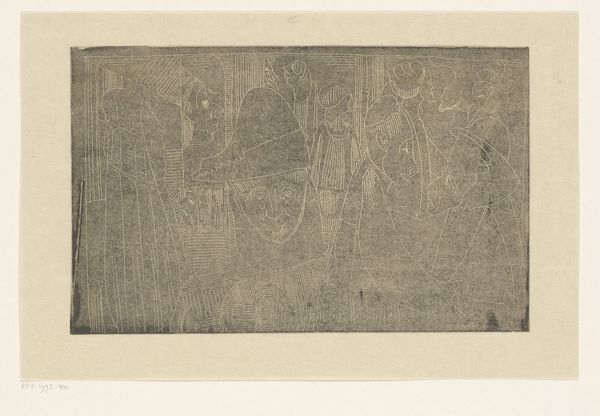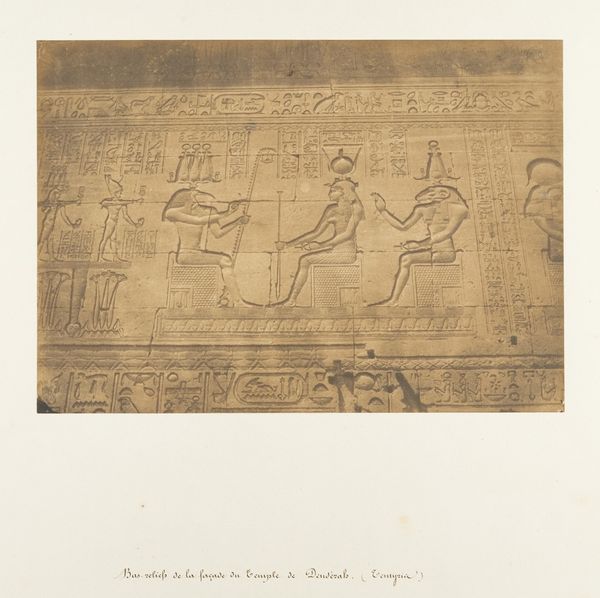
Isis et Horus-Arsiési - Bas-relief du Temple de Kalabcheh (Talmis) 1850
0:00
0:00
relief, daguerreotype, photography
#
relief
#
landscape
#
daguerreotype
#
ancient-egyptian-art
#
photography
#
carved into stone
#
ancient-mediterranean
#
history-painting
#
remaining negative space
Dimensions: Image: 8 9/16 × 6 7/16 in. (21.7 × 16.3 cm) Image: 8 7/8 × 6 9/16 in. (22.5 × 16.7 cm) Mount: 18 11/16 × 12 5/16 in. (47.5 × 31.2 cm)
Copyright: Public Domain
This photograph by Maxime Du Camp shows a bas-relief from the Temple of Kalabsha in Egypt. It was made using the waxed paper negative process. Du Camp was part of a literary circle in France in the mid-nineteenth century and travelled to Egypt with Gustave Flaubert. Like many artists and writers of the time, they were interested in what they saw as the exoticism of the East. The photograph presents an encounter between ancient Egyptian culture and the modernizing world of nineteenth-century Europe. Egypt at this time was under the rule of the Muhammad Ali dynasty, who were eager to modernize the country, with the assistance of European expertise. Du Camp's photographs, like this one, were both artistic and documentary. They provided visual records of monuments and sites. These were used by scholars and the wider public alike, and contributed to a growing European fascination with ancient Egypt. To understand this image better, you might look into histories of photography, the scholarship of Egyptology, and the cultural context of French Orientalism. The meaning of art is always tied to its moment.
Comments
No comments
Be the first to comment and join the conversation on the ultimate creative platform.
